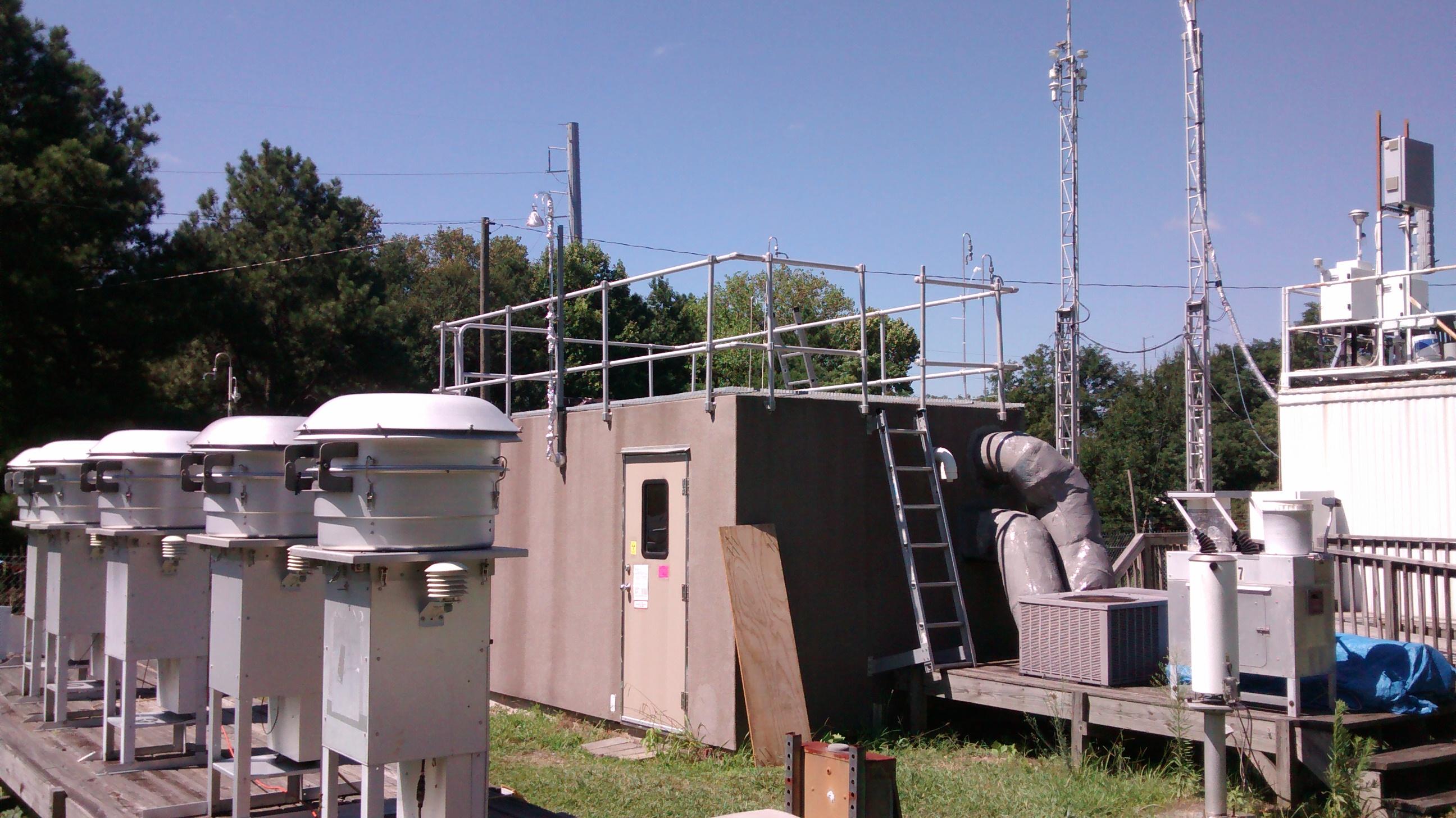Georgia Tech Study Sheds Light on Toxicity of Atmospheric Particulate Matter Pollution
Sep 14, 2023 — Atlanta, GA

Aerosol chemical measurements and sample collections were conducted at the SEARCH network site at Jefferson Street in Atlanta, Georgia.
Each year, exposure to airborne particulate matter known as PM2.5 (particles with a diameter smaller than 2.5 micrometers) leads to millions of premature deaths worldwide. Organic aerosols are the dominant constituents of PM2.5 in many locations around the world. Historically, the chemical complexity of organic aerosols has made it difficult to gauge their toxicity level.
But a study led by researchers at Georgia Institute of Technology has advanced understanding of both the chemical composition of PM2.5 and the reaction of alveolar cells of the lungs exposed to this pollution, highlighting the growing threat posed to human health.
Published in Environmental Science and Technology, the study shows that oxidized organic aerosols (OOA) are the most toxic type of organic aerosols in PM2.5.
“Oxidized organic aerosols are the most abundant type of organic aerosols worldwide,” said Nga Lee (Sally) Ng, Love Family Professor in Georgia Tech’s School of Chemical and Biomolecular Engineering and School of Earth and Atmospheric Sciences. “For example, when wildfire smoke reacts in the atmosphere, it generates OOA.”
Measurement Techniques
As the researchers used advanced techniques such as mass spectrometry to analyze the chemical composition of PM2.5 in Atlanta, Georgia, they simultaneously measured the production of reactive oxygen species (ROS) in alveolar cells resulting from pollution exposure.
ROS are molecules that can cause oxidative stress and damage to our cells, potentially leading to various health problems, including cardiopulmonary diseases.
To understand the mechanisms behind PM2.5-induced oxidative stress, the researchers employed cellular assays, which allowed them to measure both chemically and biologically generated ROS.
The study revealed that highly unsaturated species containing carbon-oxygen double bonds and aromatic rings within OOA are major drivers of cellular ROS production, advancing understanding of the chemical features of ambient organic aerosols that make them toxic.
Wildfires Are Growing Source
As the contribution from fossil-fuel sources to organic aerosols formation has declined in the United States in recent decades due to reduction strategies, the relative importance of other sources has increased, said Fobang Liu, lead author of the study.
“For example, biomass burning is expected to become a more important source of OOA with the increasing trend of wildfires,” added Liu, a former postdoctoral researcher in Ng’s lab at Georgia Tech who is now an associate professor at Xi’an Jiaotong University in China.
A major chemical characteristic of OOA formed from biomass burning is the high fraction of oxygenated aromatic compounds. “Hence, this work highlights that organic aerosols can become more toxic in the future,” he said.
Continued Collaboration
According to the researchers, their findings underscore the need for continued collaboration among the fields of atmospheric chemistry, toxicology, epidemiology, and biotechnology to tackle the global air pollution crisis.
“OOA are a surrogate of secondary organic aerosols. Secondary organic aerosols are ubiquitous and abundant in the atmosphere, we need to understand their sources and chemical processing when formulating effective strategies to mitigate PM2.5 health impacts,” said Professor Ng.
“Future work should continue to investigate the health impacts of different PM2.5 components, particularly secondary organic aerosols formed from precursors emitted during incomplete combustion processes of fossil and biomass fuels,” she said.
Different regions may have varying types of organic aerosols due to diverse emission sources and atmospheric conditions. Therefore, long-term measurement of organic aerosol types over a wide range of geographical areas will be important to advance understanding of health impacts, the researchers emphasized.
Such work is being conducted by the Atmospheric Science and Chemistry mEasurement NeTwork (ASCENT), a $12 million advanced aerosol measurement network of 12 sites around the United States that is led by Professor Ng.
CITATION: Fobang Liu, Taekyu Joo, Jenna C. Ditto, Maria G. Saavedra, Masayuki Takeuchi, Alexandra J. Boris, Yuhan Yang, Rodney J. Weber, Ann M. Dillner, Drew R. Gentner, Nga L. Ng., “Oxidized and unsaturated: key organic aerosol traits associated with cellular reactive oxygen species production in the southeastern United States,” Environmental Science and Technology, 10.1021/acs.est.3c03641, 2023

Fobang Liu, a former postdoctoral researcher at Georgia Tech who is now an associate professor at Xi’an Jiaotong University in China

Nga Lee “Sally” Ng, Love Family Professor in Georgia Tech’s School of Chemical and Biomolecular Engineering and School of Earth and Atmospheric Sciences
Brad Dixon, braddixon@gatech.edu




